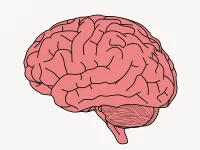Autoimmune diseases severely impact more than 50 million Americans, and there has been a worrying increase in cases in recent years, according to the Autoimmune Association. These diseases are caused by an attack from our very own immune system. Immune cells called T cells are often involved in a faulty immune response — as their role is to recognize threats — yet they mistakenly target healthy tissue as an unwanted threat, triggering an autoimmune attack and often leading to an autoimmune disorder.
Depending on what molecule the T cell targets, the effects of autoimmune attacks vary within the body. Some well-known diseases, such as celiac disease, multiple sclerosis, type I diabetes, and rheumatoid arthritis, are classified as autoimmune diseases. However, there are nearly 100 unique diseases under this category, all with vastly different causes and effects. Currently, there is no permanent cure, and treatments can have detrimental effects on the patient’s overall immune system. However, the outlook for autoimmune disease patients may drastically change.
One recent study shows a way to revolutionize treatment for autoimmune disease — or even potentially cure it. Using a new biotechnology coined “inverse vaccination,” researchers from the University of Chicago have discovered a method to unlearn learned immune responses. While typical vaccines are used to build immunity by creating certain memories for the immune system to use to recognize threats, inverse vaccination is the exact reverse process. Inverse vaccination causes the immune system to forget a learned immune response with pinpoint accuracy.
“Inverse vaccination causes the immune system to forget a learned immune response with pinpoint accuracy.”
The mechanism of inverse vaccination was pieced together from years of studies conducted by the UChicago team. In their past research, they found that the liver was a site of a phenomenon called peripheral immune tolerance. Peripheral immune tolerance regulates what the immune system will react to, making sure that not every damaged or aging cell is attacked. T cells are told what to and not to attack by this mechanism, so peripheral immune tolerance is very important for selectively targeting threats while leaving important tissues alone. The researchers realized that they could use this mechanism to create tolerance for the healthy tissue that the immune system attacks in autoimmune diseases. They just needed to figure out how to manipulate this system to create tolerance for molecules and tissue under attack.
And they recently unlocked this critical piece of the puzzle when the UChicago team discovered a type of sugar chain called p-Gal that guides molecules to the liver: where selective tolerance can then be developed. Achieving tolerance for the target molecule means that the immune system will no longer attack this specific molecule.
With a more complete picture of the mechanism, they devised the method. They can attach any molecule to the sugar chain p-Gal, and it will be guided to the site of the liver where tolerance for the molecule will be introduced. This causes T cells to unlearn their previous categorization of the molecule as an enemy. This means that inverse vaccination can stop the immune system from attacking healthy tissue, all the while preserving the rest of the immune system.
Inverse vaccination is vastly different from current treatments used for autoimmune diseases. The gold-standard treatments currently in place involve a method called global immunosuppression, which simply means the entire immune system is suppressed. While this effectively prevents the immune system from attacking the body, it stops all other functions of the immune system as well. The patient becomes extremely susceptible to contracting illnesses — and contracting them with devastating effects. The beauty of inverse vaccination, comparatively, is the fact that it is extremely selective — meaning the immune system is still able to function normally, except for the specific path being suppressed. Inverse vaccination might just be the key to curing many autoimmune diseases.
“ The beauty of inverse vaccination, comparatively, is the fact that it is extremely selective — meaning the immune system is still able to function normally, except for the specific path being suppressed.”
A wide range of promising results were demonstrated by the UChicago team, stopping a variety of autoimmune reactions, including a multiple-sclerosis-like disease in mice. Not only was the debilitating inflammation caused by multiple sclerosis stopped, but it was also almost entirely reversed. Many of the other experiments conducted also had similarly promising results.
Initial phase I safety trials for inverse vaccination are underway for multiple sclerosis and completed for celiac disease. Though it’s still in the extremely early stages of testing, this new biotechnology is extremely promising in increasing our understanding of immune response and potentially curing many autoimmune diseases.






